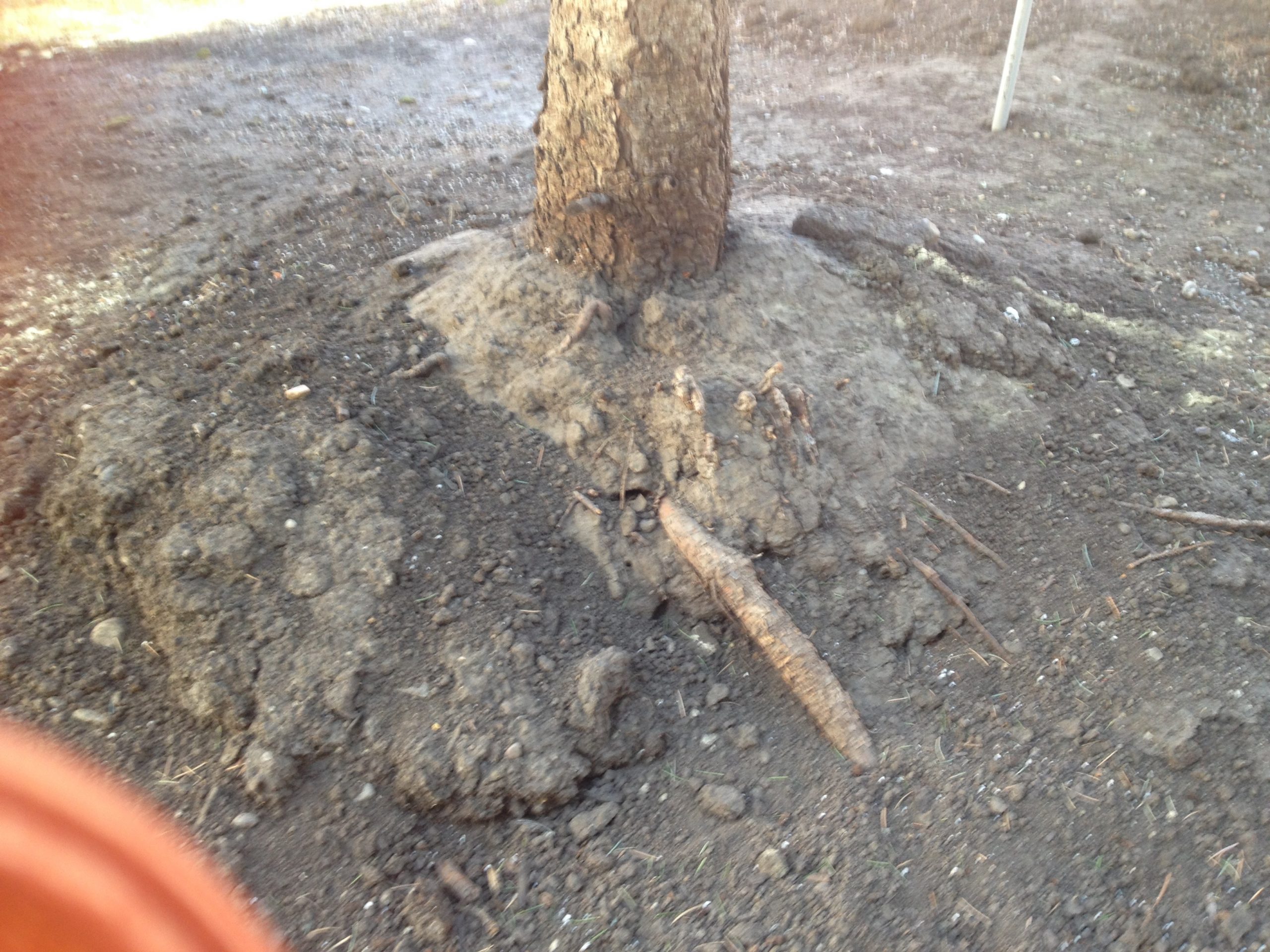
I help gardeners grow
& beginners blossom.
No seed left behind,
no soil unturned.
Together we can have lots of fun growing
great gardens using simple practical tips.
- Featured in -





Start saving & storing your garden seeds for a more more sustainable future
SIGN UP to get the FREE Seed packet PDF
X CLOSE

Soil Causes a Problem in Flooded Areas
When a major road like MacLeod Trail in Calgary was undercut and collapsed after its soil base washed away, I wondered if the same scenario could affect older trees caught in the fast moving water last week during Calgary’s big flood. After watching the You-Tube video where a 50 year-old tree falls into the Bow River (video posted at https://donna-balzer.squarespace.com/ blogsandblooms/), I was even more concerned.
I contacted independent tree assessment specialist and Registered Consulting Arborist, Anita Schill to sort out the trouble as soil piles up on trees. As well as being qualified to assess tree damage, Schill teaches soil science at Olds College so she understood my concerns.
“If there is a serious wind after such a huge amount of water, the undermined soils could give way. Everyone should be looking at their trees. Also, look to see if there are signs of lawn lifting.” This is when the flat root plate of trees pulls the lawn up and it appears to lift.
When roots are compromised (cut) by construction or stand in super-saturated soil, they will start to rock in strong winds and then large trees could start to fall. “A tree that is leaning since the flood or, if its root plate starts lifting on one side is at risk. This means the roots were undermined and soil strength is compromised and those trees could fall. A noticeable new lean is a problem.”
I was also worried about extra soil dumped on top of tree roots. Schill says“ The quantity of silt (from the flooding) isn’t a problem. The long-term problem is when a layer of soil settles on top of existing soil. Water in the soil on top cannot move down into the existing soil until it has fully saturated the top layer (a perched water table). In effect trees could dry out even if the new silt layer on top is wet.”
“The whole point is there are now two distinct textures of soil over tree roots,“ says Schill by phone Wednesday morning. She then explained how a perched water table is trouble by reminding me of the old wives’ tale about using a layer of gravel to help drainage in potted plants.
She said that people think putting gravel in the bottom of a potted plant helps with drainage. Instead, the soil above the gravel holds water until it is fully saturated before it drains into the gravel layer. This water is “perched” over the gravel layer and can’t drain into the gravel until it is soggy wet. So a potted plant with a gravel layer in the bottom becomes overly wet before moisture drains away.
“With the silt now sitting on top of our native or garden soil, the whole top layer will have to be saturated before water moves into the original soil” says Schill. It is the separate and distinct layer of newly dumped silt over our clay soil that causes the biggest problem. If there is a small amount of silt, mix it with existing soil to combine them. If there is too much to combine it with exiting soil, try to sweep or rake it off. This applies equally to gardens with annuals, perennials or trees.
Schill is not worried about the layer of silt sitting over native soil as much as she is worried about how much the soil strength has been undermined in wet soils.
“Think about building sand castles,” she suggests. “ A little bit of water helps the sand stick together but if you add too much water it loses its integrity and strength. There is a point where too much is too much – and soil or sand becomes weakened. Then there is a total loss of soil strength so there is nothing holding the tree up,” says Schill, explaining perfectly why the tree in the video fell over.
Right now homeowners in the flood affected areas are too concerned about cleaning up their homes to worry about trees but Schill wants everyone to take a minute to look at their trees. Even newly planted trees are affected. I know I wouldn’t park my car on the street in front of a newly leaning tree.

Construction in the lot next door may have cut roots and be a cause for concern. It is important to check trees for leaning after the flooding. The large elm pictured here is a city tree on city property.

Another photo of clean-up around my former house near the river. As time allows it is a good idea to look at large trees to see if they have accumulations of soil over roots or are are damaged by recent flooding.
What Would Donna Do?
Get my growing and gardening tips and pointers throughout the season.
















0 Comments